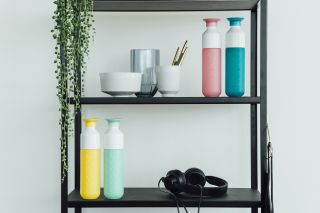Career
The 3 E's of Good Design
What makes a design "good"?
Posted April 1, 2023 Reviewed by Gary Drevitch

Leading designers from Mauro Porcini (Chief Design Officer of PepsiCo) to Michael Beirut (award-winning designer and author) frequently emphasize the need for design to be engaging and relevant, rather than merely beautiful. My own research over the past few years has similarly focused on the study of Everyday Aesthetics — the role that design plays in our daily lives to influence our thoughts and feelings and to shape our choices, actions and behaviors. Recently, I have been thinking a great deal about the question of “good design” – what it is, whether I (or any consumer) can recognize it when I see and experience it, and, what design principles designers can use to develop products, services and experiences that embody the elements of “good design."
The lens I adopt to understand “good design” stems from the paradigm of “good” work. Pioneered by educational psychologist Howard Gardner, “good work” is defined as “work that is of excellent technical quality, work that is ethically pursued and socially responsible, and work that is engaging, enjoyable, and feels good” (Gardner et. al 2001). Drawing on this, I consider “good design” to have three interrelated elements: good design needs to be Excellent in both form and function, it needs to be Engaging and evoke positive feelings (like fun, pleasure and enjoyment) during use and it needs to be Ethical in terms of how it is sourced and how it can potentially shape consumer behavior.
A great deal of research has investigated the interplay of form and function and the plethora of cool products out there show that designers are making huge strides on this front. But good design is more than a first impression. Good design is a constant source of positive value for a consumer. It is the promise of pleasure, convenience, and sensory appeal each time the product is used. My coffee machine comes to mind. The first thing I do each morning is make myself a cup of coffee. I feel a surge of joy to see that my coffee machine is ready to brew (thank you, presets) with the simple press of a button. The convenience and ease with which I am able to start my morning is a daily reminder to be grateful for, and happy with, life as it is. My coffee machine is therefore more than a kitchen appliance; it is a daily source of simple pleasure that helps set the tone for my day.

Perhaps the least thought about in terms of design is the Ethical dimension. This has been in emerging trend in aesthetics research. In a research paper, my co-authors and I studied how cute images of kittens and puppies on garbage cans, increased recycling behavior. In another paper, our team showed that making aging feel like a natural process by humanizing old produce, increased the likelihood that people would choose old and slightly damaged produce and decrease food wastage. Most recently, I have written about the emerging trend of inclusive design.
I believe that the ethical dimension of design has three components: (1) ethical in terms of how it is made, the material it uses, where that material is sourced from, the labor it uses, how it can be disposed of, (2) ethical in terms of whether the design can prompt ethical behavior in the user, and (3) whether the design is inclusive and can be equitably used by a diverse set of users. I will delve into each of these in posts to follow.
References
Gardner, Howard, Mihaly Csikszentmihalyi, and William Damon. Good work: When excellence and ethics meet. Basic Books (AZ), 2001.


